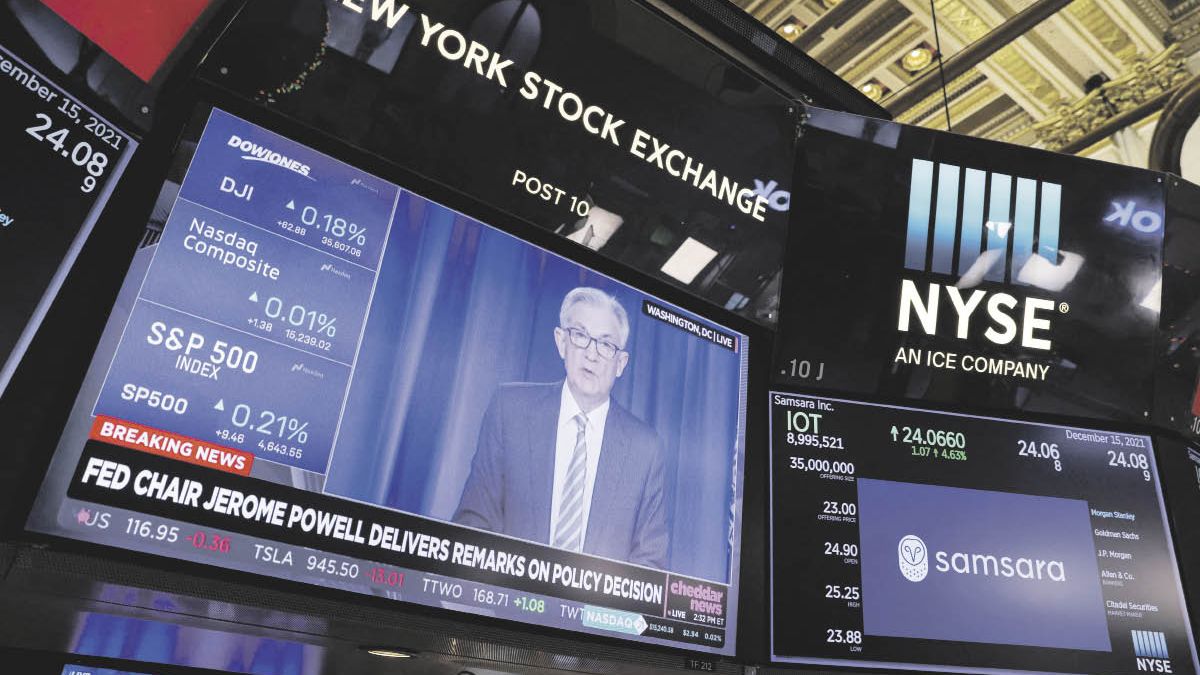There are 1.7 unfilled positions for each unemployed person, 47% of the companies cannot make up the payroll they want, compensation is accelerating, the salary increase is close to 5.7% year-on-year and half of the firms granted one in the last three months. All extreme indications. Nobody mentions stagflation anymore. For practical purposes, and for the Fed, the economy operates at full employment, although with an employment level 1.9% below the pre-pandemic (despite producing 3.1% more). There is room to raise rates without hurting the job market, Jay Powell warned us.
There was another surprise, a day before, crossing the Atlantic. The Bank of England dispatched its second rate hike. A quarter of a point and at the 0.50% level. In accordance with its rules, the beginning of the reduction of its balance sheet was triggered at the same time. It will be done, in principle, passively. Coupons will be charged and will not be reinvested. But, the surprise was to verify that four of the 9 members of the Monetary Committee advocated a half-point rate hike. If you insist successfully, the active sale of the bonds purchased with the quantitative easing, the QE, will begin. The spree is over in perfidious Albion, as Boris Johnson well knows. In the euro zone, third surprise, a harmonized inflation of 4.4% was expected and it turned out to be 5.1%.
No one would say reading the statement that the ECB is aware. However, the markets, on their own, took care of correcting the monetary horizon. A first rate hike of 10 basis points is looming for the middle of the year, which Lagarde would prefer not to do so soon. Could it be that the impatience of the markets, and the vigor of the data, end up dictating the policy? In the US, the Fed pushed the discussion on rates after its December meeting. So the markets did not believe in more than two increases in 2022, those who now lead the ranking of forecasts venture seven. The employment report reinforced the impression and produced an upward shift of the entire curve. The last two-year Treasury note auction had been oversubscribed at a rate of 0.99%. On Friday, its yield was 1.31%, a maximum of the cycle.
10-year bonds also broke through their ceiling, touching 1.936% and closing at 1.91%. How can we also interpret that the yield curve is flattening? As what it is, a traffic congestion between monetary policy that responds with a delay to its anti-inflationary duties (and forces the adjustment in the short term) and the incredibly tight anchoring of inflation expectations, which does not urge greater remuneration for long rates. It is not the fear of inflation, strange as it may seem, what drives the rise. Real rates are finally showing signs of life. The stock market corrected and was strong, but it has already stabilized by its own means while digesting the new map of rough financial conditions.
Meta (formerly Facebook) collapses 26% one day, and the next, Amazon, Pinterest and Snap post solid double-digit gains. No one’s place in Olympus is guaranteed, and paradise is more modest, but the bull market has not been canceled. The economy and employment are trading better. Rates and the Stock Market go up. The markets are no longer scared of 2022 and the crusade against inflation. There is more to calm them down. His latest fix is to bet that in March the rate hike will start with a half-point jump. So much so that the Fed got worried. Even the pioneer of the falcons, James Bullard, had to deny its convenience. Seen this way, the acclimatization task could not have worked better.
Source: Ambito
David William is a talented author who has made a name for himself in the world of writing. He is a professional author who writes on a wide range of topics, from general interest to opinion news. David is currently working as a writer at 24 hours worlds where he brings his unique perspective and in-depth research to his articles, making them both informative and engaging.




